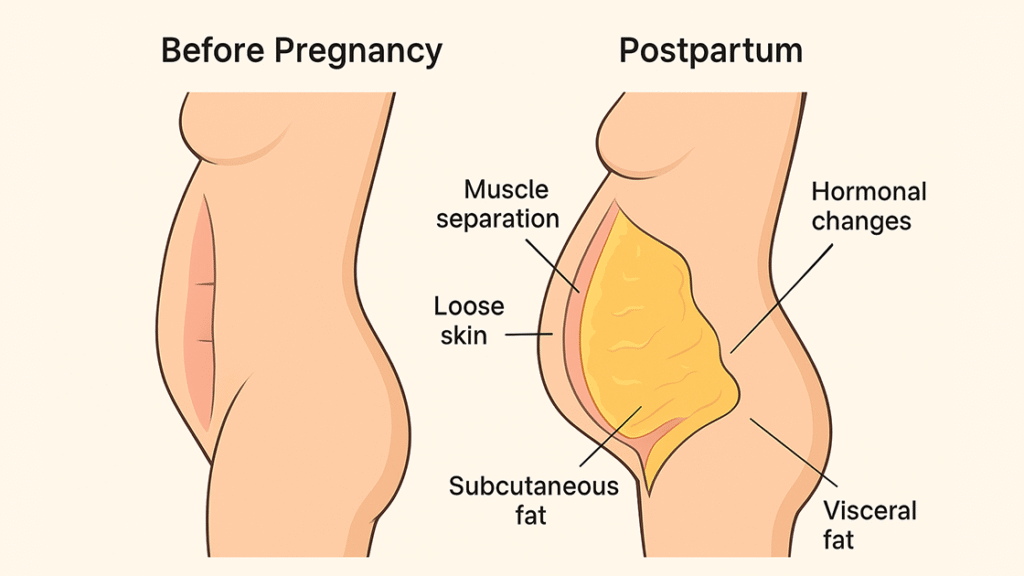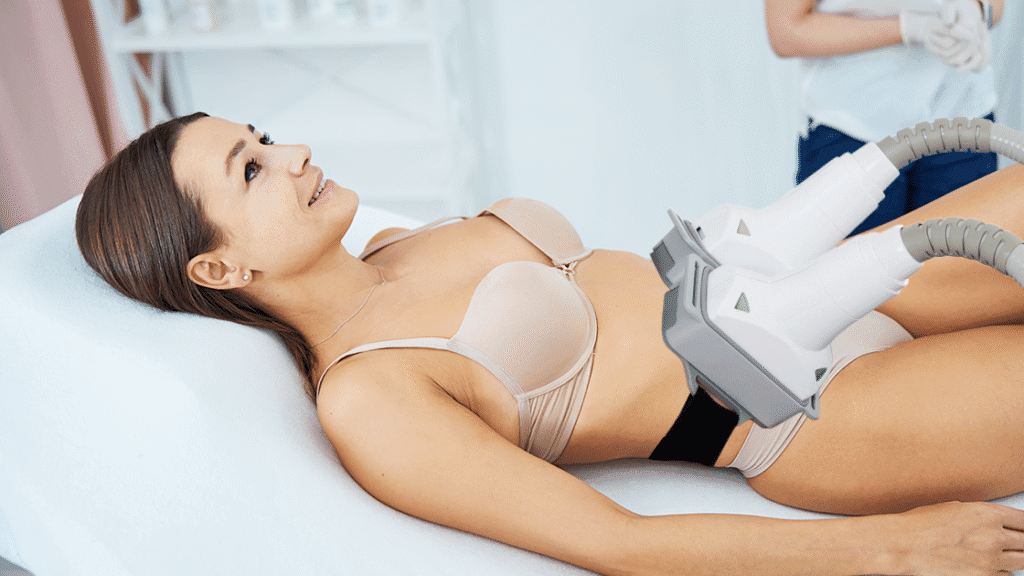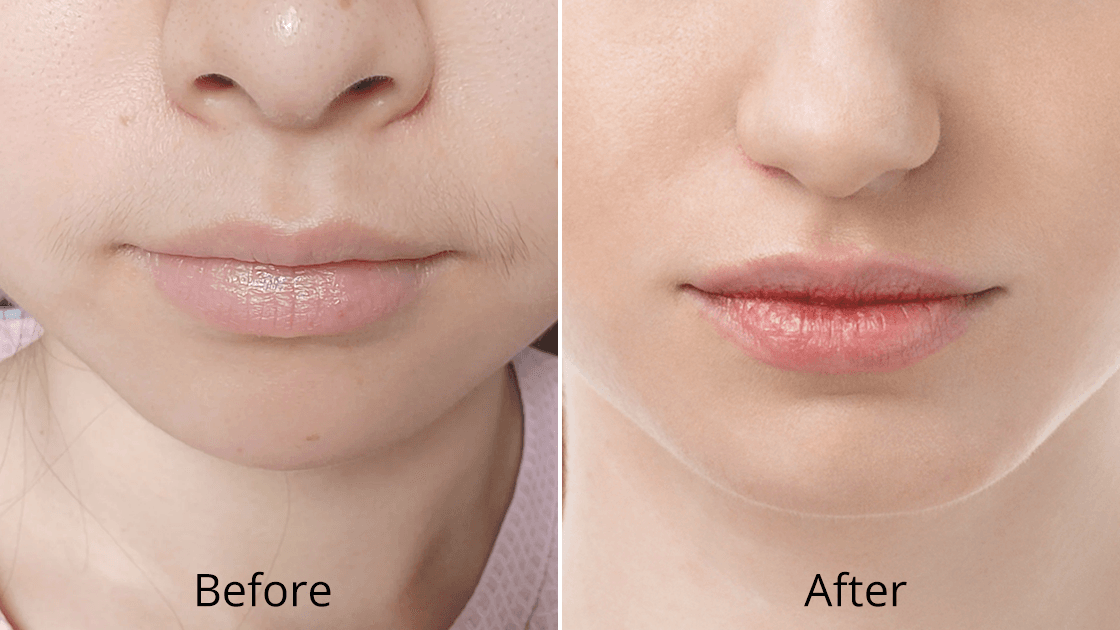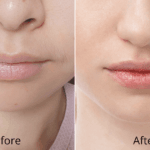The postpartum period brings profound physical and emotional changes for new mothers, with persistent abdominal fat often remaining one of the most challenging aspects of post-pregnancy recovery. Despite dedicated efforts through diet and exercise, many women find that stubborn belly fat persists long after childbirth, leading them to explore advanced body contouring solutions. Among the emerging non-invasive technologies, laser lipolysis has gained significant attention as a potential solution for addressing post-pregnancy abdominal concerns.
1. Введение
The journey of motherhood transforms a woman’s body in remarkable ways, but the physical changes that persist after delivery can significantly impact self-confidence and overall well-being. Understanding the complexities of postpartum body composition and the innovative solutions available represents a crucial step in empowering mothers to make informed decisions about their wellness journey.
1.1 Why Post-Pregnancy Belly Fat Is Difficult to Lose
Post-pregnancy abdominal fat presents unique physiological challenges that distinguish it from general weight gain or typical adipose accumulation. During pregnancy, hormonal fluctuations including elevated estrogen, progesterone, and cortisol levels fundamentally alter fat distribution patterns and metabolic processes. The rectus abdominis muscle separation (diastasis recti) creates structural changes that compromise core strength and stability. Additionally, stretched skin loses elasticity due to collagen and elastin fiber disruption, contributing to the characteristic loose appearance. These factors combine with altered insulin sensitivity and leptin resistance to create metabolic conditions that promote fat retention specifically in the abdominal region, making traditional weight loss approaches less effective.
1.2 Introducing Laser Lipolysis as a Postpartum Body Contouring Option
Laser lipolysis emerges as an innovative non-invasive technology specifically designed to address localized fat deposits resistant to conventional methods. This advanced treatment utilizes targeted laser energy to selectively disrupt adipocytes while simultaneously promoting collagen synthesis for skin tightening effects. The procedure offers significant advantages for postpartum women, including minimal downtime, reduced procedural risks compared to surgical alternatives, and compatibility with breastfeeding schedules. Modern laser lipolysis systems incorporate sophisticated cooling mechanisms and precise energy delivery protocols to maximize therapeutic outcomes while ensuring patient comfort and safety throughout the treatment process.
2. Understanding Post-Pregnancy Belly Fat
The physiological changes that occur during pregnancy and persist postpartum create a complex interplay of factors that contribute to persistent abdominal fat accumulation. Comprehending these underlying mechanisms is essential for developing effective treatment strategies and setting realistic expectations for laser lipolysis outcomes.
2.1 Causes of Belly Fat Retention After Pregnancy
Multiple physiological mechanisms contribute to postpartum abdominal fat retention, creating a challenging environment for natural fat loss. Pregnancy-induced insulin resistance often persists beyond delivery, promoting glucose conversion to stored triglycerides primarily in visceral and subcutaneous abdominal regions. Elevated cortisol levels from sleep deprivation and maternal stress activate lipoprotein lipase enzymes, enhancing fat storage capacity. The pregnancy hormone relaxin continues affecting connective tissue integrity for months postpartum, contributing to abdominal wall laxity. Additionally, decreased growth hormone production and altered thyroid function slow metabolic rate, reducing the body’s natural fat-burning capacity and perpetuating abdominal adiposity.
2.2 Types of Fat Common in Postpartum Women
Postpartum abdominal fat consists of distinct adipose tissue types requiring different therapeutic approaches for optimal reduction outcomes. Subcutaneous fat, located between skin and muscle layers, represents the primary target for laser lipolysis treatments and typically responds favorably to non-invasive interventions. Visceral fat, surrounding internal organs, poses greater health risks but remains largely inaccessible to external laser therapy. Intramuscular fat infiltration within abdominal muscles occurs due to prolonged muscle stretching and reduced activity levels. Pre-peritoneal fat accumulates in the space between muscle fascia and peritoneum, contributing to lower abdominal protrusion. Understanding these distinct fat compartments helps practitioners develop comprehensive treatment plans addressing each patient’s specific anatomical presentation.
2.3 Psychological Impact of Postpartum Belly Fat
The psychological burden of persistent postpartum abdominal changes extends far beyond aesthetic concerns, significantly impacting maternal mental health and overall quality of life. Body dysmorphic tendencies often develop as women struggle to reconcile their pre-pregnancy self-image with current physical appearance. Social media exposure and societal pressure to “bounce back” quickly exacerbate feelings of inadequacy and self-criticism. Intimacy and relationship dynamics may suffer due to decreased body confidence and altered self-perception. Additionally, clothing limitations and physical discomfort during daily activities serve as constant reminders of unwanted body changes. These psychological factors create additional stress responses that further elevate cortisol levels, perpetuating the cycle of abdominal fat retention and emotional distress.

3. What Is Laser Lipolysis and How Does It Work?
Laser lipolysis represents a sophisticated convergence of photobiology and aesthetic medicine, utilizing precise wavelength energy to achieve targeted fat reduction and skin improvement. Understanding the fundamental principles underlying this technology provides essential context for evaluating its appropriateness for postpartum контурирование тела applications.
3.1 Defining Laser Lipolysis (Laser Lipo)
Laser lipolysis, commonly referred to as laser lipo, encompasses a category of non-invasive body contouring procedures utilizing controlled laser energy to achieve fat reduction and skin tightening effects. The technology employs specific wavelength emissions, typically 1064nm, that demonstrate optimal absorption by adipocyte chromophores while maintaining safety for surrounding tissues. Modern systems incorporate advanced cooling mechanisms and sophisticated energy delivery protocols to maximize therapeutic efficacy while ensuring patient comfort throughout treatment sessions. The procedure duration typically ranges from 25-45 minutes per treatment area, making it convenient for busy mothers managing demanding schedules.
3.2 Mechanism of Action: How Light Energy Breaks Down Fat Cells
The therapeutic mechanism of laser lipolysis involves photochemical disruption of adipocyte cellular membranes through targeted photon absorption. When 1064nm laser energy encounters fat cells, chromophores within the adipocytes absorb the photonic energy, causing rapid temperature elevation and subsequent cellular membrane destabilization. This process, known as photothermolysis, creates temporary pores in the adipocyte wall, allowing stored triglycerides to leak into the interstitial space. The released fatty acids and glycerol undergo natural lymphatic drainage and hepatic metabolism, permanently removing the fat content from treated areas. Simultaneously, thermal stimulation of dermal collagen fibers promotes collagen synthesis and remodeling, contributing to skin tightening effects that complement fat reduction outcomes.
3.3 Non-Invasive Benefits Compared to Surgical Liposuction
Laser lipolysis offers numerous advantages over traditional surgical liposuction, making it particularly appealing for postpartum women seeking body contouring solutions. The non-invasive nature eliminates surgical risks including anesthesia complications, infection, bleeding, and scarring concerns. Treatment sessions require no downtime, allowing mothers to resume normal activities immediately, including childcare responsibilities and breastfeeding schedules. The gradual fat reduction process appears more natural compared to dramatic surgical changes, avoiding sudden physical alterations that might affect family dynamics. Pain levels remain minimal throughout treatment, typically described as mild warming sensations that require no analgesic medications. Additionally, the procedure’s reversibility and adjustability allow for progressive treatments tailored to individual goals and comfort levels.
4. Can Laser Lipolysis Help with Post-Pregnancy Belly Fat?
The question of laser lipolysis efficacy for postpartum abdominal concerns requires careful examination of the technology’s capabilities, limitations, and suitability for the unique physiological changes that characterize post-pregnancy body composition. Evidence-based analysis provides the foundation for informed decision-making regarding treatment expectations and outcomes.
4.1 Targeting Stubborn Subcutaneous Fat in the Abdominal Area
Laser lipolysis demonstrates particular effectiveness for subcutaneous abdominal fat reduction, which constitutes the primary fat type accessible to external laser therapy. Clinical studies indicate that patients may see significant results, with some treatments capable of reducing treated fat cells by up to 24%. The 1064nm wavelength provides optimal penetration depth for abdominal subcutaneous fat layers while maintaining safety for underlying structures. Treatment protocols typically involve systematic coverage of the entire abdominal area, including both central and lateral regions where postpartum fat commonly accumulates. The selective targeting mechanism preserves surrounding tissues, nerves, and blood vessels while specifically disrupting adipocyte integrity. Multiple treatment sessions may be required for comprehensive fat reduction, with protocols customized based on individual fat thickness and distribution patterns.
4.2 Skin Tightening Benefits for Loose Postpartum Skin
Research has demonstrated that laser treatments stimulate collagen production, resulting in skin-tightening effects after the procedure. The thermal stimulation generated by laser energy activates fibroblast cellular activity, promoting new collagen synthesis and existing fiber remodeling. This neocollagenesis process continues for several months post-treatment, providing progressive skin improvement that complements fat reduction outcomes. The skin tightening effect proves particularly beneficial for postpartum women experiencing abdominal skin laxity due to pregnancy-related stretching. However, the degree of skin tightening achievable depends on initial skin elasticity, age, genetics, and extent of pregnancy-related damage. Realistic expectations should account for the technology’s limitations in addressing severe skin redundancy or significant diastasis recti conditions that may require surgical intervention.
4.3 Safety Profile: Why It’s Suitable for Mothers After Childbirth
Laser lipolysis is considered safe when performed by qualified practitioners, with its safety profile stemming from controlled laser application that specifically targets fat cells without damaging surrounding tissues. The non-invasive nature eliminates risks associated with general anesthesia, surgical incisions, and post-operative complications that could interfere with maternal responsibilities. Treatment protocols are compatible with breastfeeding, as the localized application doesn’t introduce systemic medications or chemicals that could affect milk production or quality. The absence of downtime allows mothers to maintain normal childcare routines without disruption. Temperature monitoring and cooling systems prevent thermal damage to skin and underlying structures. Additionally, the gradual nature of fat reduction allows for physiological adaptation without sudden metabolic stress that could impact maternal health or energy levels.
4.4 Limitations: What Laser Lipolysis Cannot Fix
Understanding the limitations of laser lipolysis technology is crucial for setting appropriate expectations and identifying cases requiring alternative interventions. Laser lipolysis may not be optimal for individuals with significant excess weight or obesity. The technology cannot address visceral fat deposits surrounding internal organs, which often contribute significantly to postpartum abdominal distension. Severe diastasis recti involving substantial muscle separation requires surgical repair through abdominoplasty procedures rather than non-invasive treatments. Extensive skin redundancy exceeding the technology’s tightening capacity may necessitate surgical excision for optimal results. Additionally, laser lipolysis cannot restore pre-pregnancy abdominal muscle tone or correct fascial layer damage that affects core stability and functional movement patterns requiring comprehensive rehabilitation approaches.
5. Optimal Timing and Candidacy for Postpartum Laser Lipolysis
Determining the appropriate timing and candidate selection for postpartum laser lipolysis requires careful consideration of physiological recovery processes, hormonal stabilization, and individual health factors. Evidence-based guidelines ensure optimal outcomes while prioritizing maternal safety and well-being throughout the treatment process.
5.1 When Can Mothers Safely Undergo Laser Lipolysis?
The optimal timing for postpartum laser lipolysis depends on multiple physiological and practical factors requiring individualized assessment. Generally, a minimum waiting period of 3-6 months post-delivery allows for initial hormonal stabilization and tissue healing completion. Breastfeeding mothers should wait until nursing frequency decreases or cessation occurs to minimize potential hormonal interference with treatment outcomes. Cesarean section patients require additional healing time, typically 6-8 months, to ensure complete fascial and muscular recovery before treatment initiation. Weight stabilization represents another crucial factor, as significant ongoing weight fluctuations can compromise treatment effectiveness. Additionally, clearance from obstetric providers confirms resolution of pregnancy-related complications and readiness for elective procedures. Mental health assessment ensures emotional readiness and realistic expectation setting for optimal treatment satisfaction.
5.2 Who Is the Ideal Candidate?
Ideal candidates for postpartum laser lipolysis present specific characteristics that optimize treatment outcomes and minimize complication risks. Women with localized subcutaneous fat deposits resistant to diet and exercise efforts demonstrate the best response rates to laser therapy. Stable weight maintenance for at least 3-6 months indicates metabolic stabilization and reduces re-accumulation risks. Good skin elasticity and minimal stretch mark severity suggest better skin tightening potential with treatment. Realistic expectation levels and understanding of treatment limitations contribute to higher satisfaction rates. Non-smokers demonstrate superior healing responses and reduced complication risks compared to tobacco users. Additionally, candidates should maintain overall good health status without contraindications such as active infections, autoimmune conditions, or medications that interfere with healing processes.
5.3 Who Should Avoid It?
Certain maternal conditions and circumstances contraindicate laser lipolysis treatment, requiring alternative approaches or delayed intervention. Active breastfeeding mothers should postpone treatment until nursing concludes to avoid potential hormonal interference with milk production or quality. Women with significant weight instability or active eating disorders require stabilization before considering body contouring procedures. Pregnancy or planned conception within 12 months contraindicate treatment due to physiological changes that could compromise results. Medical conditions including diabetes, autoimmune disorders, or active infections increase complication risks and may preclude safe treatment. Unrealistic expectations or body dysmorphic disorder symptoms require psychological evaluation and counseling before procedural consideration. Additionally, financial constraints or inability to commit to post-treatment lifestyle modifications suggest suboptimal outcomes and patient dissatisfaction.
6. Treatment Process and Expectations
Understanding the comprehensive treatment process and associated experiences helps mothers prepare adequately for laser lipolysis procedures while establishing realistic expectations for both immediate and long-term outcomes. Detailed procedural knowledge enhances patient comfort and cooperation throughout the treatment journey.
6.1 What to Expect During a Laser Lipolysis Session
A typical laser lipolysis session begins with thorough skin preparation and protective eyewear application to ensure safety throughout the procedure. The treatment area receives gentle cleansing and marking to identify optimal applicator placement positions for comprehensive coverage. Advanced systems utilize large treatment applicators measuring approximately 40mm x 80mm to efficiently cover abdominal areas while maintaining uniform energy distribution. The procedure involves systematic movement of the laser applicator across marked treatment zones, delivering controlled energy at power densities ranging from 0.7-1.7 W/cm². Dual cooling systems incorporating water cooling and thermoelectric cooling maintain comfortable skin temperatures throughout treatment. Patients typically experience mild warming sensations with occasional tingling, generally described as tolerable and relaxing rather than uncomfortable.
6.2 Treatment Duration and Number of Sessions Required
Individual treatment sessions typically require 25-45 minutes depending on the size and complexity of the treatment area. Most patients may need one to two treatments for each body part, though individual requirements vary based on specific goals and anatomical factors. Initial consultations include comprehensive assessment and treatment planning to determine optimal session numbers and scheduling intervals. Sessions are typically spaced 4-6 weeks apart to allow for natural fat elimination processes and tissue recovery between treatments. Some patients achieve satisfactory results with single treatments, while others benefit from 2-3 sessions for comprehensive fat reduction and skin improvement. Treatment protocols are customized based on fat thickness measurements, skin quality assessment, and individual aesthetic goals to optimize outcomes while minimizing unnecessary treatments.
6.3 Common Sensations During and After Treatment
During laser lipolysis treatment, patients commonly experience mild warming sensations as the controlled energy interacts with subcutaneous tissues. Intermittent tingling or pulsing sensations may occur as the applicator moves across treatment areas, generally described as comfortable and tolerable. The sophisticated cooling systems maintain surface temperatures within comfortable ranges, preventing thermal discomfort while ensuring therapeutic efficacy. Post-treatment sensations typically include mild tenderness similar to muscle fatigue after exercise, resolving within 24-48 hours. Some patients report temporary numbness or altered sensation in treated areas, which normalizes as natural healing progresses. Mild redness or warmth may persist for several hours post-treatment, indicating normal physiological response to the therapeutic intervention. These sensations gradually subside without intervention, allowing patients to resume normal activities immediately.
6.4 Downtime and Recovery: Returning to Daily Life
One of the primary advantages of laser lipolysis is the absence of significant downtime or activity restrictions following treatment sessions. Patients can typically resume normal daily activities immediately after treatment completion, including childcare responsibilities, work obligations, and light exercise routines. The non-invasive nature eliminates concerns about wound care, dressing changes, or activity limitations that accompany surgical procedures. Mothers can continue breastfeeding schedules without interruption or safety concerns for infant health. However, patients should avoid intense abdominal exercises or strenuous activities for 24-48 hours to optimize treatment outcomes. Staying well-hydrated and maintaining healthy lifestyle habits enhance the natural fat elimination processes activated by treatment. Most patients schedule treatments during lunch breaks or convenient times, returning to work or family responsibilities without disruption to their daily routines.

7. Results and Effectiveness
The effectiveness of laser lipolysis for postpartum abdominal fat reduction depends on multiple variables including individual physiology, treatment parameters, post-treatment care, and realistic expectation alignment. Understanding the timeline and characteristics of results helps mothers make informed decisions and maintain appropriate expectations throughout their treatment journey.
7.1 How Soon Can Results Be Seen?
Results from laser lipolysis typically become visible up to three months after treatment, though initial improvements may be noticeable earlier in the recovery process. The gradual nature of fat elimination through natural lymphatic drainage and hepatic metabolism creates a progressive reduction rather than immediate dramatic changes. Some patients report improved skin texture and mild circumferential reduction within 2-3 weeks as initial inflammatory responses subside and collagen remodeling begins. Significant fat reduction becomes apparent at 6-8 weeks as disrupted adipocytes complete their elimination through physiological processes. Peak results typically manifest at 12-16 weeks post-treatment when neocollagenesis reaches maximum effectiveness and all treated fat cells have been naturally processed. The gradual timeline allows for natural-appearing improvements that complement the body’s healing processes.
7.2 Longevity of Results with Proper Diet and Exercise
The permanent destruction of treated fat cells provides long-lasting results when supported by appropriate lifestyle maintenance strategies. Treated adipocytes cannot regenerate, ensuring that eliminated fat deposits will not return to the same anatomical locations. However, remaining fat cells throughout the body retain the capacity for enlargement if caloric intake exceeds expenditure over extended periods. Maintaining stable weight through balanced nutrition and regular physical activity preserves treatment outcomes indefinitely. Weight gain following treatment may result in fat accumulation in untreated areas, potentially altering overall body proportions. Pregnancy after laser lipolysis may affect abdominal contours due to physiological changes rather than treatment failure. Hormonal fluctuations, aging processes, and genetic factors continue influencing body composition regardless of previous laser treatments, emphasizing the importance of ongoing healthy lifestyle practices.
7.3 Realistic Outcomes for Postpartum Women
Realistic outcome expectations for postpartum laser lipolysis should account for the unique physiological characteristics and limitations associated with post-pregnancy body composition. Most patients achieve 1-3 inch reduction in abdominal circumference measurements, with individual variations based on initial fat thickness and distribution patterns. Skin texture improvements and mild tightening effects enhance overall aesthetic outcomes beyond simple fat reduction metrics. The technology proves most effective for localized subcutaneous fat deposits rather than generalized weight loss or comprehensive body transformation. Patients with realistic expectations and appropriate candidacy criteria report higher satisfaction rates compared to those seeking dramatic transformations. The gradual nature of improvements allows for psychological adaptation and positive self-perception changes that complement physical modifications. Combining laser lipolysis with comprehensive lifestyle modifications optimizes both aesthetic outcomes and long-term health benefits for postpartum mothers.
8. Lifestyle Integration for Long-Term Results
Maximizing and maintaining laser lipolysis outcomes requires integration with comprehensive lifestyle modifications that address nutrition, exercise, and overall wellness approaches. This holistic strategy ensures optimal results while promoting long-term health and body composition management for postpartum mothers.
8.1 Nutrition Strategies for Postpartum Fat Loss
Effective postpartum nutrition strategies should support laser lipolysis outcomes while addressing the unique metabolic demands of recovery and potential breastfeeding requirements. Balanced macronutrient distribution emphasizing adequate protein intake (1.2-1.6g/kg body weight) supports tissue repair and lean muscle maintenance during fat loss phases. Complex carbohydrates from whole grain sources provide sustained energy while minimizing insulin spikes that promote fat storage. Healthy fats including omega-3 fatty acids support hormone production and inflammatory regulation crucial for optimal healing responses. Anti-inflammatory foods such as leafy greens, berries, and fatty fish may enhance treatment outcomes by reducing systemic inflammation. Adequate hydration (35ml/kg body weight) supports lymphatic drainage and metabolic waste elimination processes activated by laser treatment. Meal timing strategies including smaller, frequent meals help stabilize blood glucose and support consistent metabolic function.
8.2 Safe Postpartum Exercise Routines for Better Outcomes
Exercise programming for postpartum women should prioritize safe, progressive approaches that complement laser lipolysis outcomes while addressing specific physiological needs. Core rehabilitation focusing on deep stabilizing muscles (transverse abdominis, pelvic floor) should precede intensive abdominal training to ensure proper movement patterns and prevent injury. Low-impact cardiovascular activities including walking, swimming, or cycling support fat metabolism and lymphatic circulation without excessive joint stress. Resistance training using bodyweight or light weights helps preserve lean muscle mass during fat loss phases while improving overall strength and functional capacity. Flexibility and mobility work address pregnancy-related postural changes and muscle imbalances that may affect treatment area accessibility and outcomes. Exercise progression should follow medical clearance guidelines, typically beginning with gentle activities at 6 weeks postpartum and gradually increasing intensity based on individual recovery rates and comfort levels.
8.3 Combining Laser Lipolysis with Holistic Postpartum Wellness
Comprehensive wellness approaches enhance laser lipolysis outcomes by addressing the interconnected factors influencing postpartum body composition and overall health. Stress management techniques including mindfulness, meditation, or counseling help regulate cortisol levels that contribute to abdominal fat accumulation. Adequate sleep quality and duration (7-9 hours nightly) support hormone regulation, metabolic function, and tissue repair processes essential for optimal treatment outcomes. Postpartum massage or manual lymphatic drainage may enhance the elimination of disrupted fat cells and reduce treatment-related inflammation. Social support systems and realistic goal-setting prevent unrealistic expectations and promote positive body image development. Regular follow-up assessments monitor progress and allow for treatment plan adjustments based on individual responses and changing life circumstances. Integrating these holistic approaches creates sustainable lifestyle changes that support both immediate treatment goals and long-term health maintenance.
9. Key Takeaways: Is Laser Lipolysis Right for Post-Pregnancy Belly Fat?
Laser lipolysis offers a promising solution for postpartum abdominal concerns, particularly for women with localized subcutaneous fat and mild skin laxity resistant to diet and exercise. Its non-invasive nature, minimal downtime, and compatibility with breastfeeding make it an appealing option for mothers who cannot accommodate lengthy recovery periods. The procedure provides gradual fat reduction and skin tightening, with permanent fat cell destruction when combined with healthy nutrition and consistent exercise. However, limitations must be considered. Severe diastasis recti, significant visceral fat, or excessive skin redundancy are better managed with alternative or surgical approaches. Success also relies on proper candidate selection, realistic expectations, and stable weight maintenance. When used appropriately, laser lipolysis can form an effective part of comprehensive postpartum body restoration. Its safety profile and long-term potential make it a valuable tool for women seeking subtle contouring and enhanced confidence after childbirth.
10. FAQs
While the treatment itself doesn’t introduce harmful substances, most practitioners recommend waiting until breastfeeding concludes or significantly decreases to optimize results and avoid any potential hormonal interference with outcomes.
Clinical studies suggest laser lipolysis can destroy up to 24% of treated fat cells per session. However, multiple sessions may be needed for comprehensive results depending on individual goals and anatomy.
Laser lipolysis provides mild to moderate skin tightening effects through collagen stimulation, but severe skin redundancy may require surgical intervention for optimal correction.
You can resume normal daily activities immediately, but intense abdominal exercises should be avoided for 24-48 hours to optimize treatment outcomes and comfort.
No, laser lipolysis does not affect future pregnancies. The treatment targets subcutaneous fat cells without impacting reproductive organs, hormones, or fertility. However, weight and body changes during future pregnancies may alter the aesthetic results, so maintenance or additional treatments may be needed afterward.








